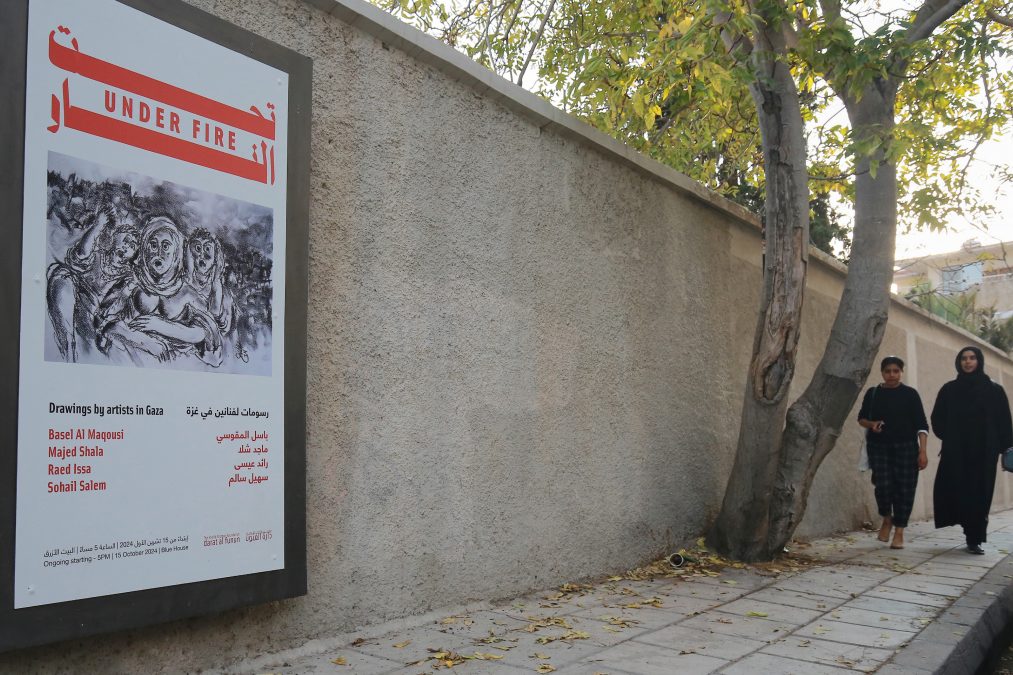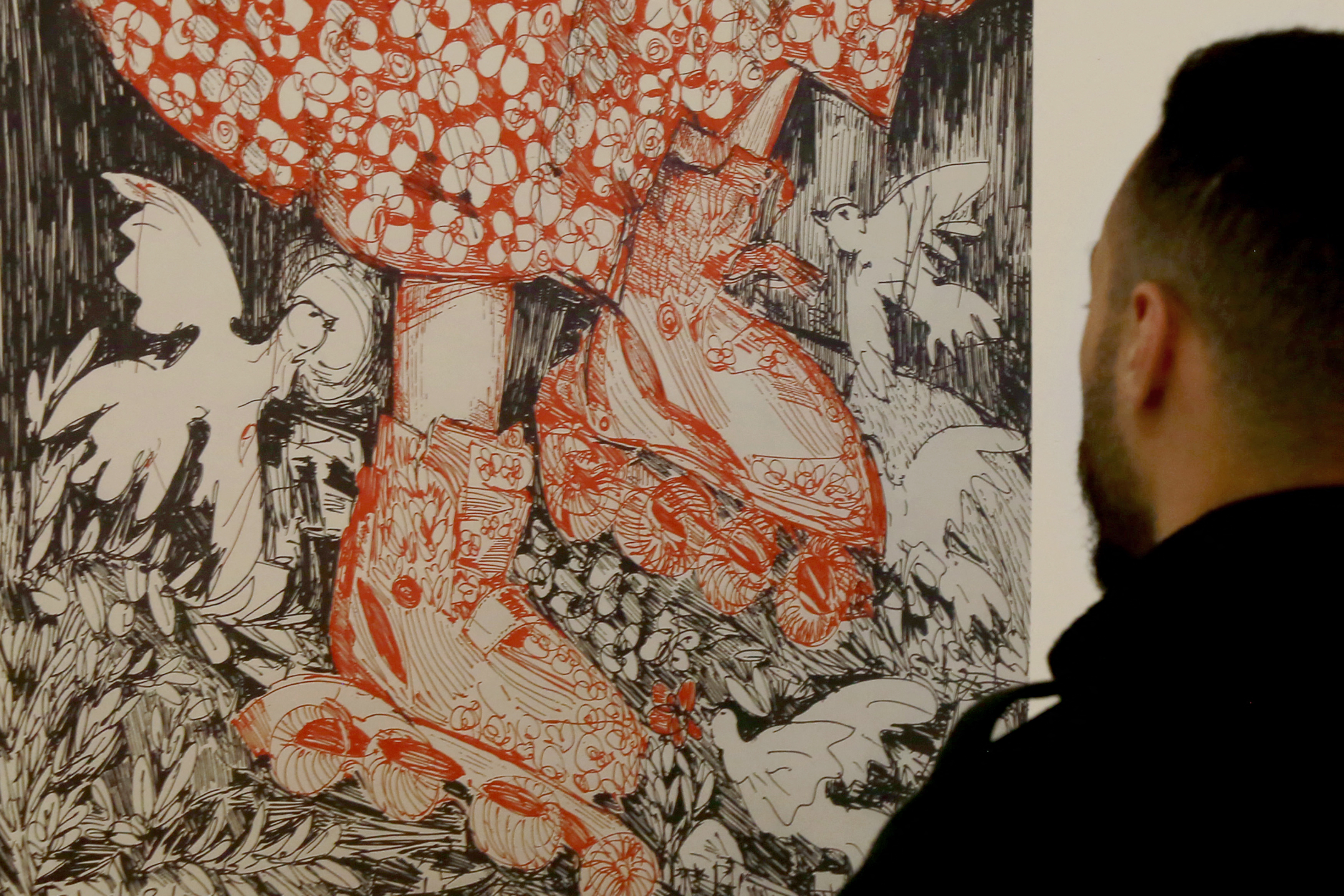Amman — When war erupted in Gaza, Palestinian artists had only one way to share their work expressing the harrowing reality of the conflict: having it smuggled out of the besieged territory.
For six months, they handed over paintings and other artworks to people leaving Gaza through its Rafah border crossing with Egypt until Israeli ground forces closed it in May when they took control of the frontier.
“The paintings document the brutality of war and massacres… carrying pain and sorrow, but also embodying an unwavering resolve,” said Mohammad Shaqdih.
He is deputy director of Darat al-Funun, an art gallery in the Jordanian capital Amman exhibiting pieces that were smuggled out in a show entitled “Under Fire”.
While the works themselves managed to escape the war-torn territory, the four artists who created them — Basel al-Maqousi, Raed Issa, Majed Shala and Suhail Salem — were not so lucky.
They remain trapped within the narrow coastal strip where Israel’s military campaign has killed more than 43,500 people, mostly civilians, according to the Hamas-run territory’s health ministry, and created a humanitarian disaster.
The artworks “depict the daily realities of war and the hardship these artists endure, who have been displaced and lost their homes”, said Shaqdih.
He said the gallery was already familiar with the artists on display before the war broke out on October 7, 2023, when Palestinian militant group Hamas launched an unprecedented attack on southern Israel.
That attack resulted in the deaths of 1,206 people, mostly civilians, according to an AFP tally of Israeli official figures.
“The language of art is universal. Through these paintings, we are trying to convey our voices, our cries, our tears, and the nightmares we witness daily to the outside world,” said Maqousi, 53, speaking to AFP by phone from Gaza.
The exhibition features 79 artworks crafted from improvised materials including medicine wrappers, and using natural pigments made from hibiscus, pomegranate, and tea.
The drawings show people under bombardment, displaced families on donkey-drawn carts, makeshift tents, weary and frightened faces, emaciated children clinging to their mothers, and blindfolded men surrounded by military vehicles.
“I can’t paint with colors and expensive pigments because there are more pressing priorities here in Gaza, like food, drink, and finding safety for myself and my family” reads a text by Suhail Salem next to his sketches drawn in school notebooks with ballpoint pens.

In a letter displayed alongside his work, Majed Shala describes how he was displaced to the southern city of Deir al-Balah. His house, studio, and 30 years of artwork were completely destroyed.
“When the war first started, I felt completely paralyzed, unable to create or even think about making art,” he wrote.
As time passed, “I started to document the real-life scenes of displacement and exile that have affected every part of our daily lives,” he added.
His words are displayed next to a painting of a man embracing his wife amid a scene of destruction.
“These scenes remind me of the stories our elders told us about the 1948 Nakba,” or “catastrophe”, he wrote, referring to the exodus of around 760,000 Palestinians during the war that led to the creation of Israel.
“But what we’re living through now feels far more devastating, far worse than what people endured back then.”
Exhibition visitor Victoria Dabdoub, a 37-year-old engineer, said she was moved by the artwork.
“It is important that works like these are shared worldwide so that people can feel the pain, sorrow, and suffering of the people of Gaza,” she told AFP.
On the wall nearby is posted a message from artist Raed Issa: “We assure you: if you’re asking how we are, we are far from all right! Constant bombing and terror, day and night! Gaza is in mourning, waiting for relief from God!”








